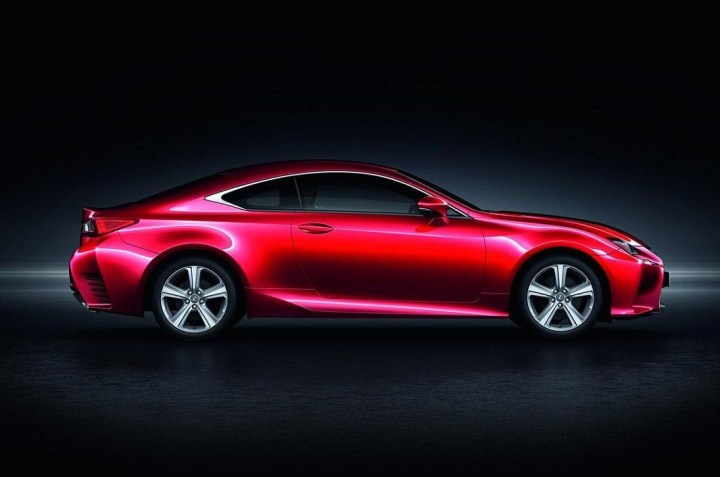
The mill in question is a 2.0-liter four-cylinder unit tuned to make 241 horsepower at 5,800 rpm and 258 foot-pounds of torque from 1,650 to 4,400 rpm. The RC 200t is capable of reaching 62 mph from a stop in about 7.5 seconds before going on to a top speed of 143 mph. Alternatively, the coupe is capable of returning over 31 mpg in a mixed cycle when driven with a light right foot.
Power is sent to the rear wheels via an eight-speed automatic transmission that can be left in automatic mode or shifted manually using paddles.
Buyers looking for a sportier driving experience can select the F Sport package. It doesn’t add additional ponies but it brings a Torsen limited-slip differential and Lexus’ Adaptive Variable Suspension, which aims to strike a balance between comfort and sport by adjusting the stiffness of each shock absorber individually in a matter of seconds.
Visually, the F model stands out with model-specific 19-inch alloy wheels wrapped by low-profile tires, a sprinkling of F emblems all around and a bigger rendition of Lexus’ ubiquitous spindle grille, while a perforated leather-wrapped steering wheel and aluminum caps on the pedal spruce up the interior.
The Lexus RC 200t is scheduled to go on sale across the Old Continent before the end of the year. The Toyota-owned car maker hasn’t revealed whether the U.S.-spec RC will benefit from the downsized four-banger, but we wouldn’t be surprised to see it land on our shores in the not-too-distant future in order to take on the BMW 428i.



